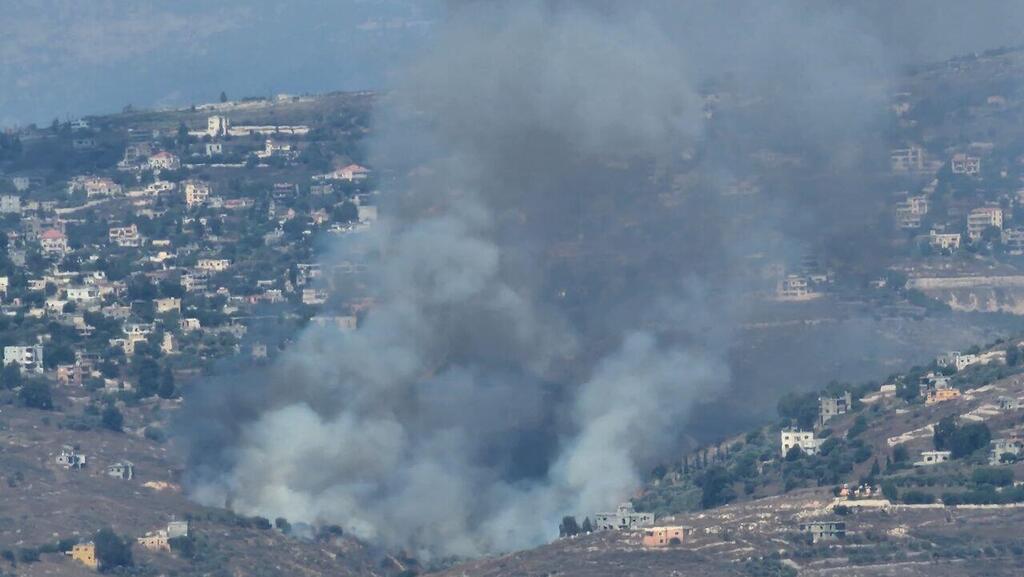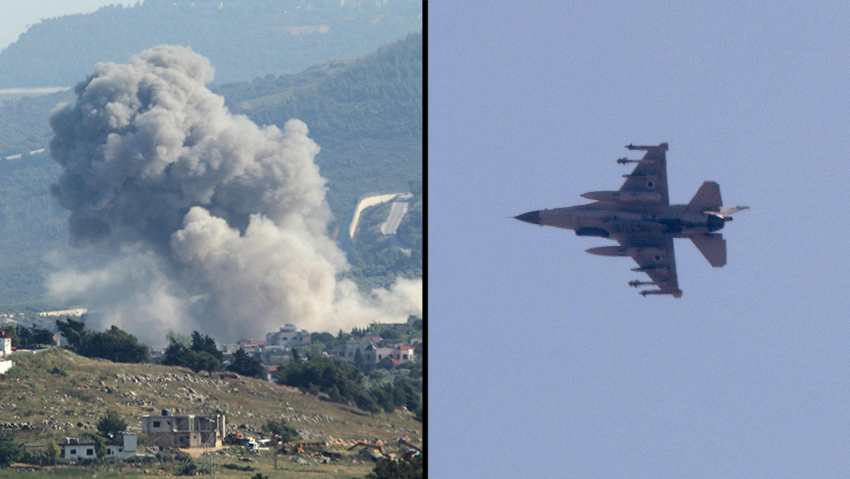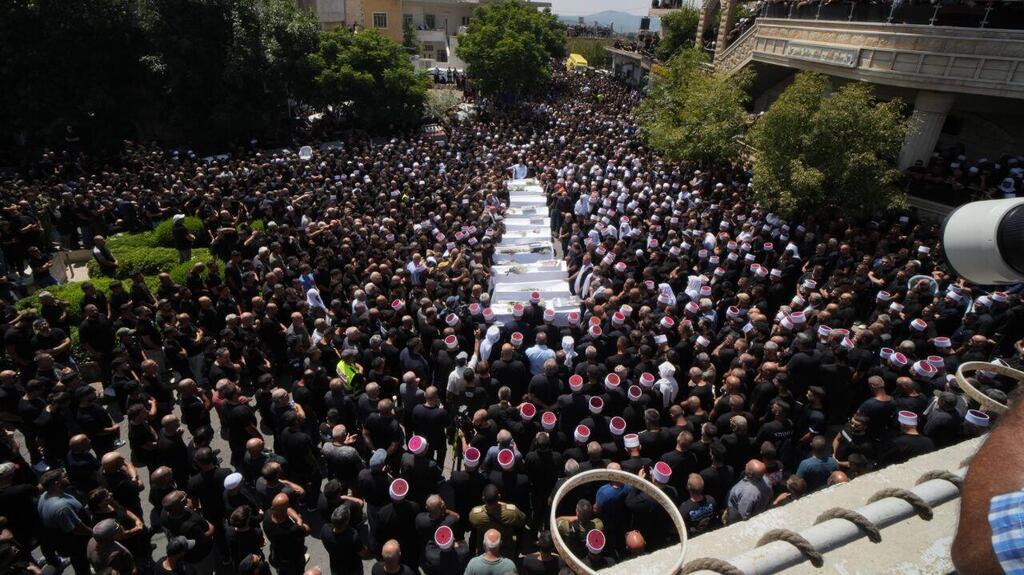Getting your Trinity Audio player ready...
Top Israeli officials signaled last night, even as the bodies of the children at the soccer field in Majdal Shams remained unidentified, that Israel is unlikely to drastically alter its containment policy towards Hezbollah, even after the Cabinet meeting where the IDF's response will be approved.
Still, ministers will need to choose from several options for a strike unprecedented in Lebanon since the Second Lebanon War in 2006, exactly 18 years ago. The IDF will present assessments on what actions Hezbollah might tolerate and continue its "normal" daily skirmishes, and what actions could escalate the situation.
The main problem to be presented to the ministers is that no one in the IDF can guarantee that an Israeli response won’t lead to an escalation that could result in a full-scale war within days, reversing the focus from Gaza to Lebanon. "It's hard to create a ladder of combat days with Hezbollah, like having them strike up to Haifa or Hadera but not further south. Despite a clear kinetic dialogue we have with Hezbollah and well-established equations, and a long-standing, almost intimate connection with Nasrallah as the oldest enemy in the Middle East, it's impossible to know for certain where we might end up," a senior security official explained.
In the Northern Command, there are no plans to evacuate additional settlements near the border like Nahariya or Ma'alot, but the readiness at bases in the north and in the Air Force will be at its peak, on top of the high alert of recent times.
After returning from the United States, Prime Minister Benjamin Netanyahu held a small meeting with senior security officials, where response options for the north were presented to him. The security cabinet then convened to discuss and approve the action. An Israeli senior official said, "I estimate that there will be a very severe response, leading to several days of limited fighting, during which Hezbollah could extend the range of its attacks up to Haifa."
Here are the main and emerging IDF response options, from the well-known target bank in the Northern Command, which have been set aside since before October 7:
Limited but "Photogenic" Infrastructure Strike: Until now, Israel has deliberately avoided attacking Lebanese civilian infrastructure indirectly used by Hezbollah, such as key bridges, central highways, power stations, and sea and air ports. Bombing such a target would signal the Beirut government, already fragile due to the sectarian division in the war-torn country, that it's time to rein in Hezbollah before all citizens—Maronites, Shiites, and Druze alike—suffer the consequences, following years of severe economic crisis.
A strike on such a target could occur after the IDF ensures minimal or no casualties, and if the target also contains fuel stocks, the attack would achieve its image-driven goal, which is just as important to the government these days as its practical value. Spectacular images of fire and huge plumes of smoke, in videos and photos, would appease the Israeli public, similar to the strike in the western Yemeni port city of Hudaydah about a week ago. The IDF could simultaneously strike for the first time in the war a Lebanese army base adjacent to Hezbollah as a defense measure.
Strategic Hezbollah Weapons Depot Strike: Eighteen years ago, minus two weeks, the primary Israeli move in the Second Lebanon War began with Operation "Specific Weight," also known as the Night of the Fajrs, during which the Air Force destroyed Hezbollah's then-stockpile of long-range rockets. To date, the Air Force has struck close to 5,000 targets in southern Lebanon since October, including drone and anti-aircraft missile depots in the Bekaa Valley, but most targets, especially the high-quality ones, have been reserved for wartime. The dilemma in the Northern Command is complex and daily, as certain strikes could expose intelligence sources. In a terror army with an arsenal of over 100,000 rockets across Lebanon, hundreds to thousands of precision missiles, tens of thousands of anti-tank missiles, and thousands of drones, it's a risky calculation made every day in planning strikes, especially one to choose tonight.
New and Symbolic Target: Last month, the Air Force struck a logistical target from Hezbollah’s aerial array, 135 kilometers from Israel’s border, in the Baalbek area, in what was described as "the farthest target in Lebanon struck by Israel" since the start of the war. There’s no significance to the target if it's not in the Lebanese capital, Beirut. Hezbollah holds significant civilian areas in Beirut, and the IDF could carry out a precise and measured strike that would be heard throughout the city, not just in the Dahiya quarter, without leading to the deaths of many Lebanese. According to foreign reports, Israel has already openly struck in Beirut, but in a very targeted operation earlier this year, eliminating senior Hamas member Saleh Al-Arouri—a killing for which Hezbollah was slow, to say the least, to retaliate.
Eliminating Senior Terror Commanders: According to IDF data, since October 7, about 500 terrorists have been killed in southern Lebanon, dozens of them senior commanders at battalion level and above, and three equivalent to brigadier general rank. Hezbollah commanders are older than their IDF counterparts, with mid-level ranks averaging 40-50 years old and senior ones around 60. The loss of their experience in each such elimination harms Hezbollah operationally, deters other commanders, and forces them to spend their time fleeing. However, to date, the IDF’s assassination policy in Lebanon has not practically improved the security of hundreds of thousands of northern residents or brought back one displaced Israeli to their abandoned home in the Galilee.
Eliminating senior leaders requires waiting for an operational and intelligence opportunity with fighter jets always on standby, which could come within days to weeks. It's no coincidence that Nasrallah ordered his operatives about a week ago to stop using smartphones.
In any case, the fact that the IDF quickly published the name of the Hezbollah unit commander who directed the rocket fire at Majdal Shams from the Lebanese side of Mount Dov, Ali Mohammed Yahya, can highly likely indicate that he will be the first target eliminated in any option chosen by the Cabinet. If we look at the policy of the political echelon in recent months, we can conclude that even after the strike is carried out, there will be official Israeli voices trying to close the event, until the next time.





